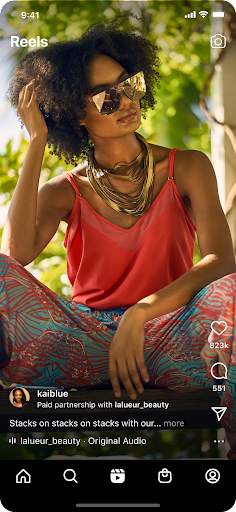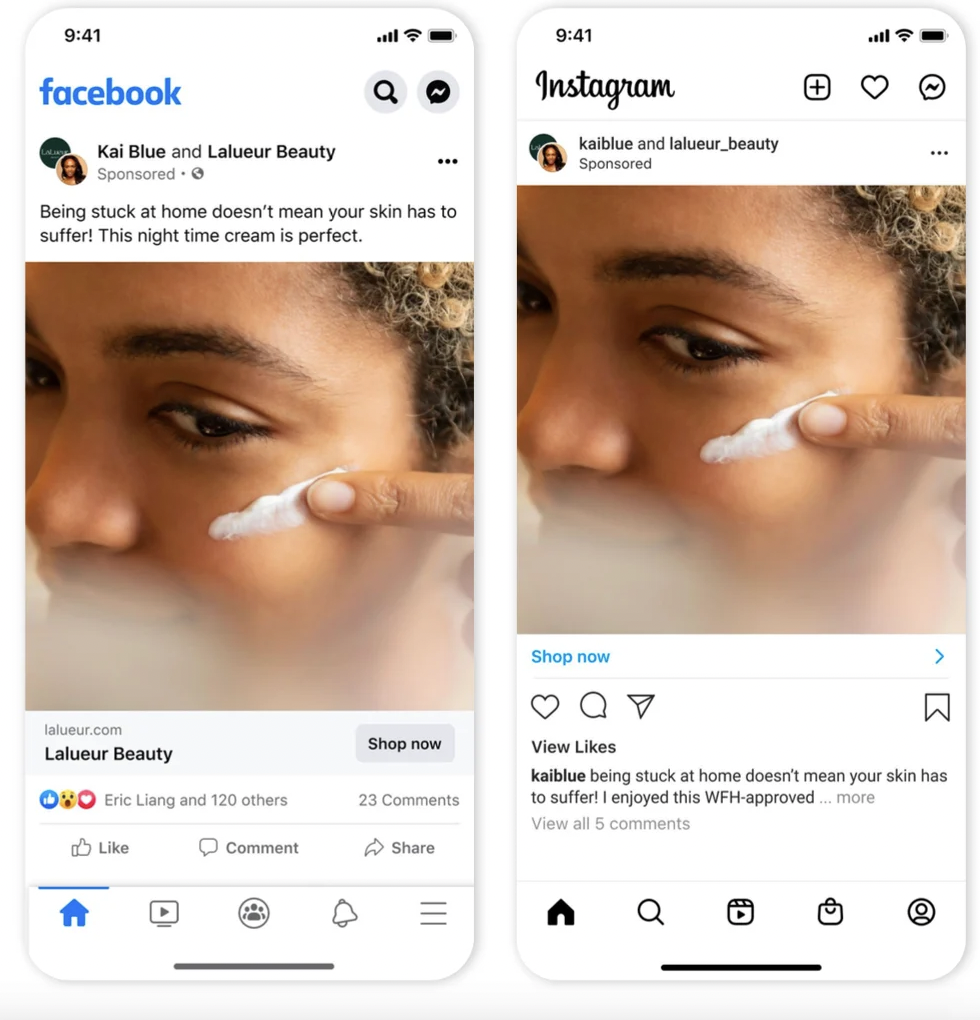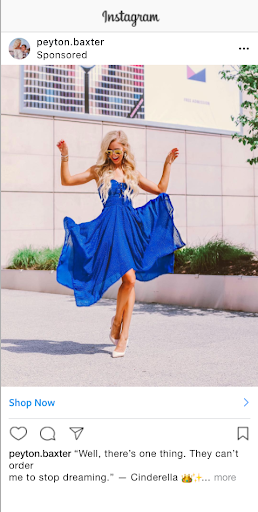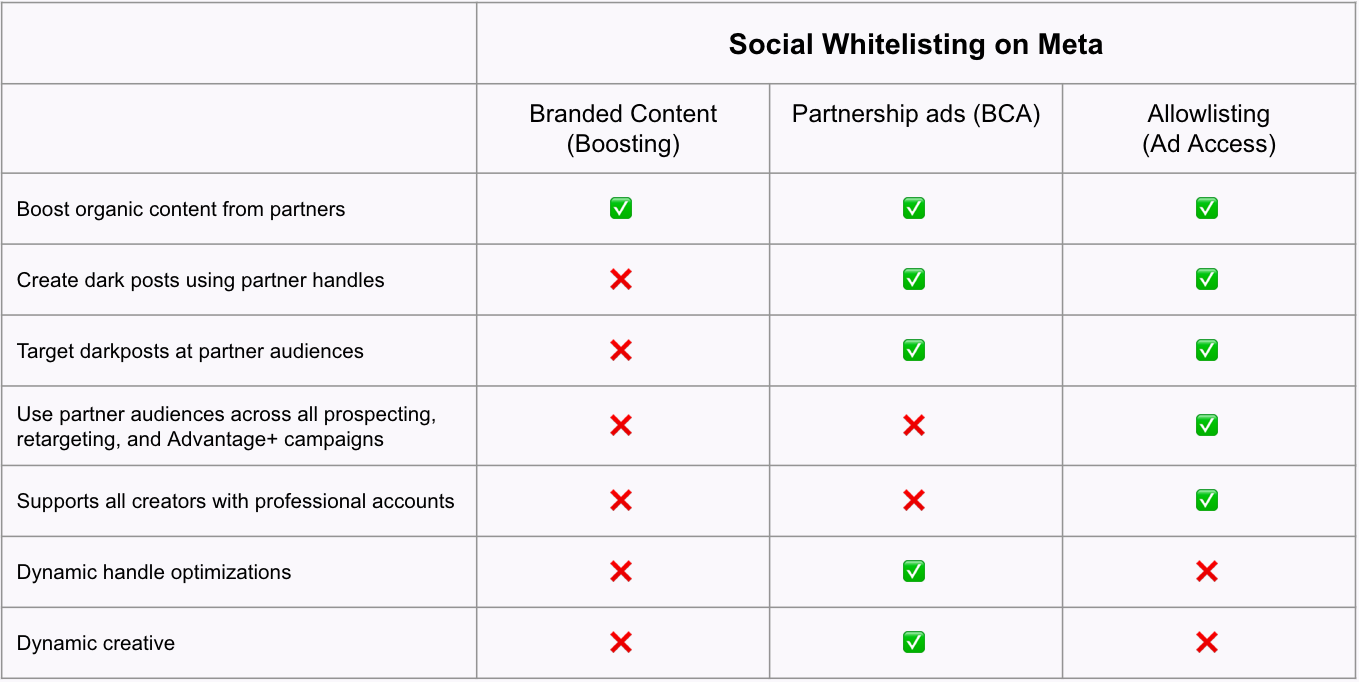Whitelisting 101
What is whitelisting?
Whitelisting is the process of a brand gaining advertising permissions from a content creator or other partner on Instagram, Facebook, or TikTok to run paid ads under their social media identity.
There’s many benefits to whitelisting, such as:
Boosting authentic user engagement on Instagram, Facebook, and/or TikTok to overcome limited organic reach
Improving RoAS and CPAs by testing creator handles, audiences, and content across Prospecting, Retargeting, and Advantage+ campaigns
Improving the ROI on investments in ambassador, influencer, and affiliate programs by extending the shelf life of user-generated content
Methods for whitelisting on Instagram and Facebook
Advertisers can amplify partner accounts on Meta using several different methods: Branded Content, Partnership Ads (formerly known as Branded Content Ads), or Allowlisting.
Branded Content (also known as “Boosting”)
What is branded content?
Branded content is organic content created by an influencer, creator, or publisher that features or mentions a brand's products or services. These posts can be boosted as a sponsored post by the advertiser tagged.
The below is an example of a branded content post boosted by an advertiser. When boosted, the ad will state Paid partnership with the brand partner.
Benefits and limitations
Branded content provides brands with authentic, organic content that’s easily boostable. Requesting and granting branded content access requires little work from both the brand and creator, making it extremely efficient and scalable for a business of any size.
The biggest limitation to note with branded content whitelisting is that you can only target a creator’s engaged audience if the creator is featured in the ad handle/header.
Partnership Ads (formerly known as Branded Content Ads)
What are partnership ads?
Partnership Ads provide brands with the access needed to both amplify existing creator posts and create new ads under the creator’s identity.
The below is an example of a partnership ad. The ad will note ‘Sponsored’ and say the partner’s handle ‘and’ the brand partner’s handle.
Benefits and limitations
Advertisers have more ad creation flexibility as they can create completely new ads or dark posts from the creator’s handle. Additionally, they’re able to boost more types of organic content such as Instagram Collab posts, @mentions, people tags, and product tags. Another benefit is that advertisers gain access to the influencer’s audience and can amplify existing posts to not only the creator’s existing audience, but also millions of other potential lookalike consumers.
One downside of partnership access is that you can only utilize a creator's audience if they are featured in the ad set where their audience is targeted
Allowlisting (also known as “Advertiser Access”)
What is allowlisting?
Allowlisting provides the brand with the same level of access that branded content ads does, and then some. Allowlisting gives the advertiser unhindered access to create and leverage influencer handles, content and audiences across ALL Meta campaigns.
The below is an example of an allowlisted ad. The post doesn’t mention the brand’s name, and has a 'Sponsored' label.
Benefits and limitations
With allowlisting access, all of the influencer’s content will flow directly into Facebook Ads Manager and be accessible for boosting or creating new ads. The advertiser does not need to be tagged in the original post in order to gain access to the creator’s assets. Additionally, your team can build engaged and lookalike audiences from the creator’s Instagram account and Facebook Page to target net new audiences and significantly expand reach.
One downside of allowlisting is that it can be cumbersome to make sure partners have their accounts set up properly to grant your team the access needed.
Comparison of each whitelisting method on Meta:




